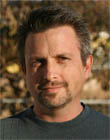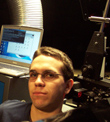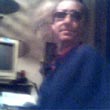|
|
 
|
|
Author
|
Topic: Phantom LE and RE Channels (DD 9-Channel) - Would This Work?
|
|
|
|
|
|
|
|
|
|
|
|
|
|
|
|
|
Karen Hultgren
Master Film Handler

Posts: 492
From: Agoura Hills, CA, USA
Registered: Mar 2000
|
 posted 03-03-2003 01:11 PM
posted 03-03-2003 01:11 PM





Bobby,
Here is some data on the new XD10 player:
"The DTS XD10 Media Player is a digital playback system used in cinemas that is designed to deliver 10 channels of superior quality digital audio and video for alternate media, and to provide cinema subtitling, closed captions, and narration. It is a dual system with reference to film sound in that the digital audio data is recorded on DVD/CD-ROM discs that are loaded onto a hard drive in the unit. Proprietary DTS timecode is used to synchronize the sound and picture and is printed onto the release print from the soundtrack negative.
DTS timecode assures not only accurate sound and picture synchronization, but is keyed with a unique serial number to assure films are run with the correct digital audio track. To further ensure fail-safe operation, the XD10 performs automatic error detection. If errors are detected, the XD10 automatically pulses the cinema processor to the proper analog sound format. The timecode is printed between the picture and optical sound track The optical sound track is used for backup and is still available for theaters not yet upgrade to DTS digital resulting in a single inventory of prints. When playing DTS formatted film in DTS digital, the XD10 automatically starts; stops, and tracks film breaks and changeovers.
The XD10 provides left, center, right, left-center, right-center, left-back surround, left surround, right-back surround, right surround, and subwoofer channels. The XD10 is capable of playing back DTS digital sound in 5.1, 6.0, 8-track, and 10-track. It must be connected to a cinema processor capable of managing the desired channel configuration.
The XD10 allows for storage of up to 30 complete film sound tracks loaded on its hard drive. Once the hard drive reaches capacity, obsolete titles are easily deleted allowing new titles to be downloaded. After the title information is downloaded, the projectionist may select what playback is desired.
Software updating the XD10 is easily done with a downloadable system disc. Hardware options are available to expand the XD10 functionality:
- the addition of video board for the Video Option
- the addition a second audio board to expand the number of audio channel outputs to 20
- the addition board for CSP (subtitles/captions) and Narration Options
- the addition of an AES/EBU digital output board.
DTS encoded material is available in two digital sound formats: Standard (APTX100) and Coherent Acoustics.
- Material recorded in standard digital audio at a 44.1K sample rate with APTX100 digital audio data compression (4:1) providing 8 audio channels plus 2 auxiliary channels.
- Material recorded with Coherent Acoustics encoding is scalable, and allows for lossless compression if desired, as well as 96/24. Coherent Acoustics provides for 10 audio channels, plus 2 auxiliary channels. The auxiliary channels will not be phase coherent with the main output channels. The audio used in conjunction with the video will be Coherent Acoustics PCM 48/24 and will be compatible to standard DVD recordings
The XD10ís internal hard drive is used as the film sound signal source and two DVD drives are used to download title/film digital sound information to the hard drive. When DTS cinema discs are placed in the DVD drives, the XD10 automatically downloads the first reel (in approximately 30 seconds). The balance of the reels are then downloaded.
The downloading process only needs to be performed once, from that point on, playback is automatic."
I don't have information on the titling of any "new" sound format.
Let me know if you have any questions.
Karen at DTS
khultgren@dtsonline.com
| IP: Logged
|
|
|
|
|
|
Bobby Henderson
"Ask me about Trajan."

Posts: 10973
From: Lawton, OK, USA
Registered: Apr 2001
|
 posted 03-03-2003 06:24 PM
posted 03-03-2003 06:24 PM




I'm glad to see DTS supporting a four channel layout for the surrounds (left side, left back, right back, right side). I think that is something that can fit in better with the existing split-surround model rather than having one odd back wall surround channel.
It is also a good move to make the XD10 unit scaleable. With adding a second sound board, the potential of as many as 20 channels of sound could be very impressive for certain kinds of special venue theaters. I can also see how such a system might pay off in areas like Broadway plays, laser light shows and any other presentation that might make use of a digital sound master with many channels.
As to what the format should be called, I could see the tendency to call it something like "DTS-X" or "Super DTS" and so on. But I think the general public is pretty confused by all the acronyms at this point. Probably the best thing would be to stick with the standard DTS brand name but simply add the channel notation to it for certain key shows. A regular DTS show could continue to use the standard DTS brand name. Maybe the new shows could just use simple notation like DTS-8 and DTS-10. Maybe for some fancy display ad where the DTS logo might be reproduced large, there may be room to use that 24/96 moniker if applicable. But at really small print sizes, dot gain will kill its readability.
| IP: Logged
|
|
|
|
All times are Central (GMT -6:00)
|
|
Powered by Infopop Corporation
UBB.classicTM
6.3.1.2
The Film-Tech Forums are designed for various members related to the cinema industry to express their opinions, viewpoints and testimonials on various products, services and events based upon speculation, personal knowledge and factual information through use, therefore all views represented here allow no liability upon the publishers of this web site and the owners of said views assume no liability for any ill will resulting from these postings. The posts made here are for educational as well as entertainment purposes and as such anyone viewing this portion of the website must accept these views as statements of the author of that opinion
and agrees to release the authors from any and all liability.
|

 Home
Home
 Products
Products
 Store
Store
 Forum
Forum
 Warehouse
Warehouse
 Contact Us
Contact Us




 Printer-friendly view of this topic
Printer-friendly view of this topic







![[Roll Eyes]](rolleyes.gif) Nobody's going to spend money on developing a new analog system. So to answer your question, lack of interest by manufacturers would prevent it.
Nobody's going to spend money on developing a new analog system. So to answer your question, lack of interest by manufacturers would prevent it.











